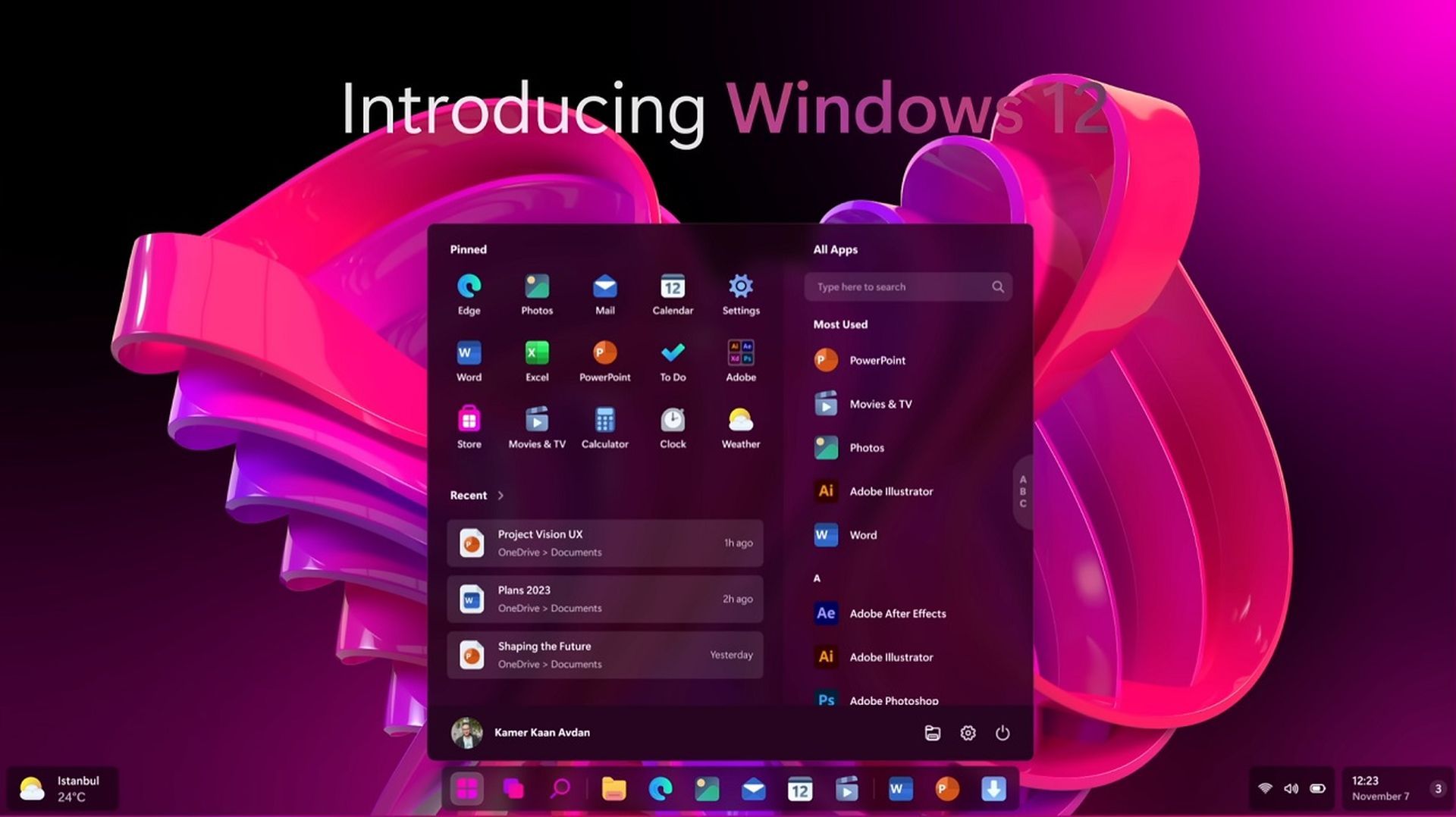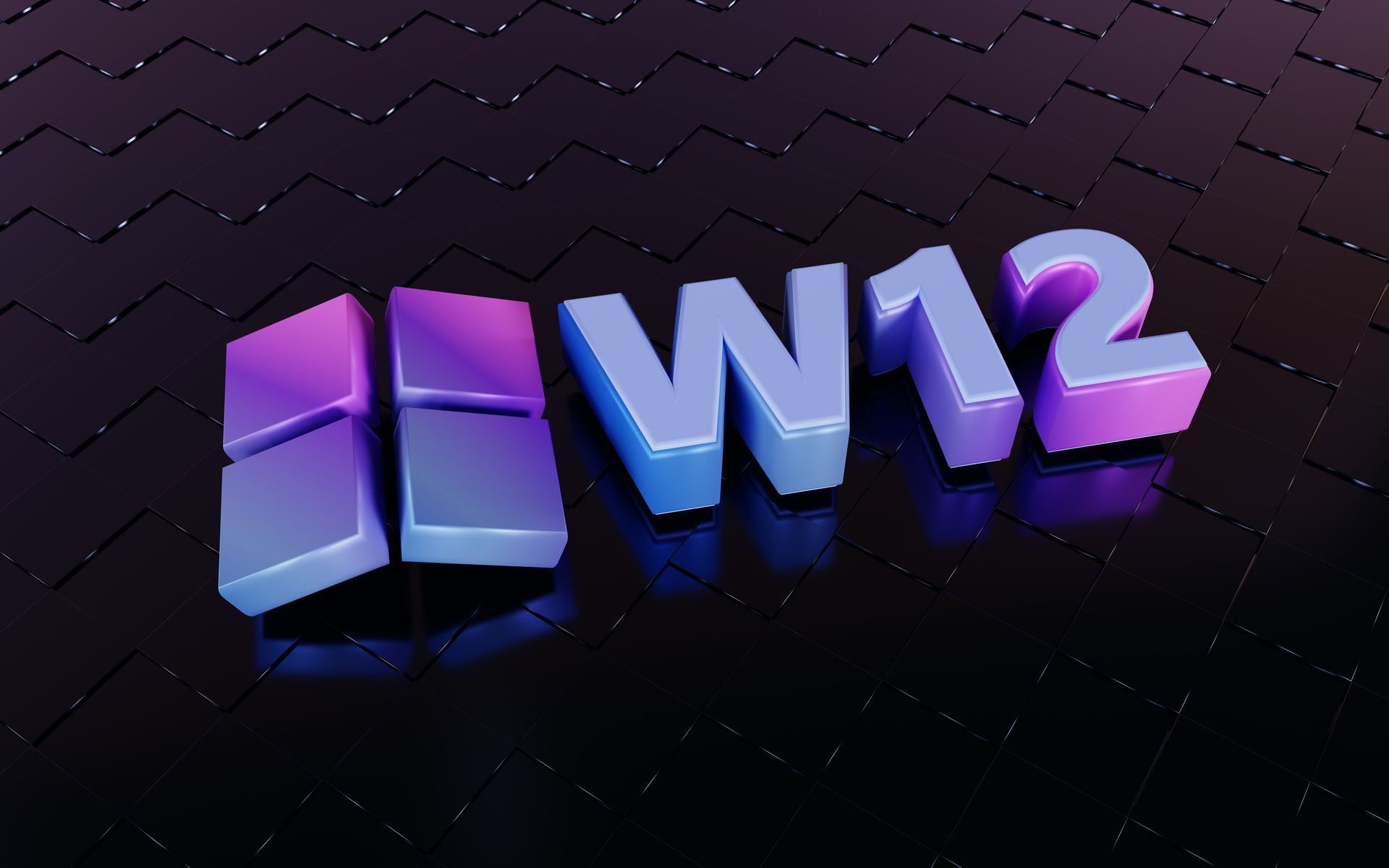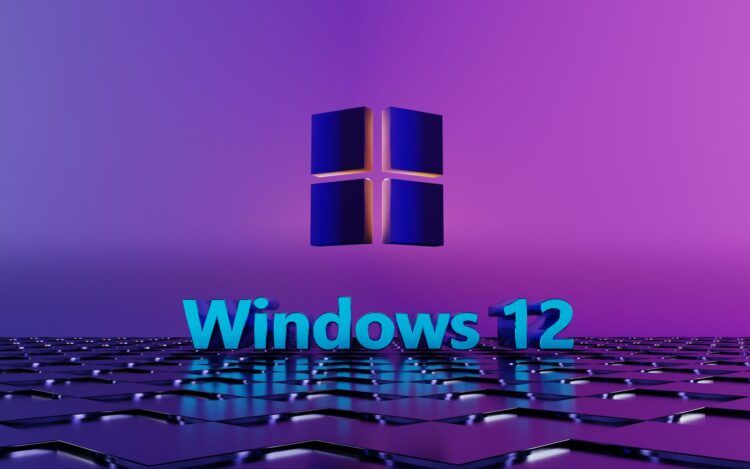Although it doesn’t yet have a name, many people have started calling the next version of Windows “Windows 12” since it follows Windows 11 in time. This page compiles all of the information we currently know about the features that will be included in the next release of Windows.
It’s crucial to bear in mind that we still don’t know how Microsoft intends to sell and distribute the next major release of Windows. Whether it will launch as a feature upgrade for Windows 11 or really be branded Windows 12 is unknown. Windows 11.1 or something more ethereal like Windows Aurora might be the choice.
While we believe Microsoft should promote this as Windows 12, we won’t know for sure until closer to the anticipated release date. The next round of significant upgrades and improvements for Windows is anticipated to launch in 2024.

Windows 12: Release date
Sources indicate that the release of the next major version of Windows is anticipated for the second half of 2024, or three years after the release of the first release of Windows 11. This is due to Microsoft’s ambitions to upgrade the current version of Windows with new features every few months, as well as its decision to go back to a three-year development cycle for major versions of the Windows platform.
Microsoft already does this with Windows 11 using an internal update schedule known as “moments.” A fresh moment update will be released to the public every few months with a number of new features and quality-of-life improvements. Two of these instant updates for Windows 11 have already been released in 2023, with the most recent upgrade becoming live in June.
Microsoft will launch Windows 12 with the same strategy and continue to provide quality of life and new feature upgrades for the next three years until “Windows 13” is prepared in 2027. In the event that Microsoft doesn’t alter its intentions, the cycle will then rinse and repeat.
Microsoft is now testing early platform code on the Windows Insider Canary Channel, where it plans to showcase long-delayed development items for the platform’s next major update. The code that will be released on top of Windows 11 through instant updates is presently being tested by insiders in the Dev Channel or below.
Windows 12: System requirements
The particular hardware requirements for Windows 12 are yet unknown. Microsoft drastically increased the system requirements for Windows 11 at launch, making the majority of current Windows 10 PCs unsuitable for the Windows 11 upgrade.
According to Windows 11’s system requirements, a computer must have CPUs from the AMD Ryzen 2000 series or Intel 8th generation. Additionally, a TPM and at least 4GB RAM are needed.
As the next version of Windows is said to heavily emphasize AI capabilities, I do suspect some features (mostly AI focused) may be restricted to more recent PCs with an NPU or GPU that can handle on-device AI processing. This is because not all PCs will be able to handle that functionality without the dedicated hardware.
Windows 12: Features
Microsoft is anticipated to release Windows 12 with an overhauled desktop interface, as is often the case with a new version of Windows. During Microsoft’s Ignite 2022 keynote last year, a quick cutaway showed a brand-new user interface (UI) that had never been seen before. According to my sources, this is an early version of the UI that will be included in Windows 12.
The user interface differs significantly from Windows 11’s in that system features like the system tray, search bar, and weather indicator are now located at the top of the screen, leaving just your pinned and open applications floating in a bar along the bottom of the display that resembles a dock.

It’s unclear if this new interface will be exclusive to touchscreen and 2-in-1 devices or whether it will be implemented across all Windows 12 computers. It’s most likely going to be a user interface tailored to certain device types, with the option to switch back to the more conventional Windows desktop layout if you’d like.
A redesigned lock and login screen that is more touch optimized, a new notification center that can categorize alerts by people in addition to by program, and the capability to pin widgets directly to the desktop are some more UI tweaks and features that I’m hearing are in the works.
A new dynamic wallpaper feature is also reportedly in the works. It will employ AI to give 2D wallpapers a parallax effect, giving the impression of subtle depth as the user moves their mouse pointer over the picture or tilts their tablet or 2-in-1.
Windows 12: AI
We’ve already begun some early capabilities in this area on Windows 11, and Microsoft has officially said that the future edition of Windows will concentrate on AI experiences. A specific neural processing unit (NPU) in Windows 11 now provides AI camera and microphone effects.
With Windows 12, this sort of capability is anticipated to increase, including Windows’ capacity to analyze material that is shown and provide contextual prompts to launch projects or programs based on the information that is presently being seen. Windows could also be able to recognize text and objects inside of photos, making it simple for users to copy and paste such elements elsewhere. The operation of certain AI elements will need specialized hardware.
Microsoft is also introducing its own AI Copilot, which processes a sizable language model using cloud computing, to Windows 11. Copilot can respond to difficult inquiries and requests as well as analyze stuff on the screen and provide useful information about it.

Windows 12: Conclusion
As a result, although not yet having an official name, the next version of Windows is often referred to as “Windows 12” since it was released after Windows 11. It is projected that the release will occur in the second half of 2024, in line with Microsoft’s aim to update Windows periodically with fresh features.
Although the precise hardware requirements for Windows 12 are yet unclear, it is anticipated that features focusing on artificial intelligence (AI) may call for more modern PCs with specialized hardware capabilities. An updated desktop interface with system features at the top of the screen and programs floating in a bar at the bottom is said to be included in the next edition.
With features like AI camera and microphone effects, contextual prompts depending on presented content, and object detection in photographs, AI experiences will also be a major emphasis. In general, Windows 12 promises to bring a revamped user interface and improved AI capabilities to give a more effective and natural computing experience.
By the way, do you know how to install Stable Diffusion on Windows?
Featured image credit: Unsplash





